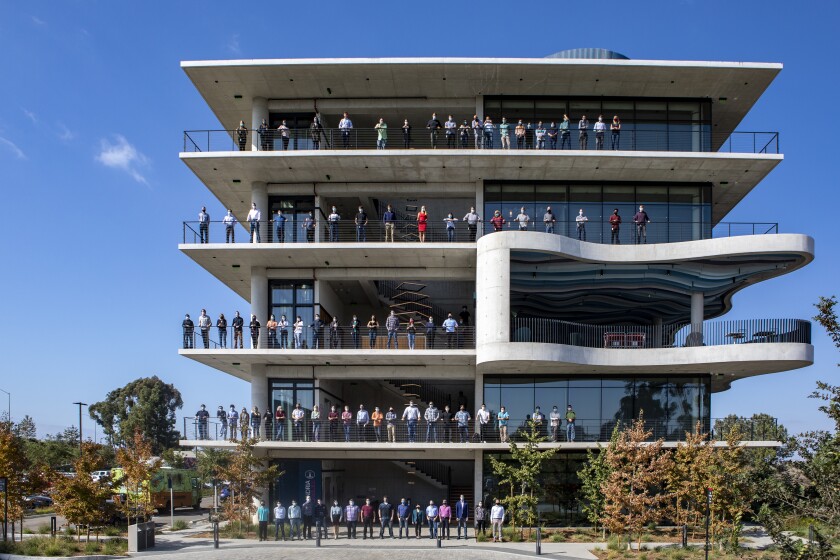ASML completes acquisition of Cymer
San Diego’s Cymer, a maker of complex lasers used in semiconductor production, has completed its sale to ASML Holdings of The Netherlands in a cash and stock deal value at about $3.7 billion.
The price at closing was significantly higher than the $2.5 billion estimated when the takeover was first announced in October. That’s due mostly to the run-up in ASML’s stock price, which rose from $50 a share last fall to $83.61 at Thursday’s close.
In the short term, few changes are expected at Cymer, which employs about 1,300 full and part time employees worldwide and has 100 job openings currently.
Cymer Chief Executive and co-founder Robert Akins will continue with the firm, heading its effort in San Diego to build the next generation of lasers for making smaller, more powerful chips.
Cymer President Ed Brown also will stay on, leading the unit that makes current generation lasers and other equipment used in semiconductor foundries today.
“There are no planned (workforce) reductions,” said Akins. “In fact the opposite is true. There will be people being added over time.”
ASML paid $20 in cash and 1.15 shares of its stock for each share of Cymer stock. The deal valued Cymer at $116 per share based on ASML’s closing price Thursday.
On Oct. 16, the day before deal was announced, Cymer’s shares closed at $47.83.
The merger aims to accelerate the development of Extreme Ultraviolet laser technology – which Cymer has been working on for a decade, funneling more than $500 million into the effort.
Chipmakers are counting on EUV to allow the continuation of Moore’s Law, a technology industry axiom that says the number of transistors packed into integrated circuits doubles every two years.
While Cymer has made progress, EUV technology has proven tricky and expensive. Last year, Intel and other chip makers pledge to invest $4.1 billion in ASML to speed up the development of the next generation of chip making technology.
Cymer’s lasers are a key piece of ASML’s next generation systems. But perfecting the lasers has taken longer than expected – forcing chip makers to use double patterning and other less efficient manufacturing techniques.
The merger of Cymer and ASML is a big bet that EUV technology will be the one paves the way for chipmakers to continue to shrink integrated circuits.
“Cymer, because of our technical expertise, remains the EUV technology center” for the merged companies, said Akins. “We are combining our forces to make sure laser produced plasma is the winning technology.”
The most advanced chips today pack transistors very close together on the silicon. To get an idea, smartphone processors today are being made with transistors 28 nanometers apart. A fine hair is about 50,000 nanometers wide.
EUV aims to drop that down to 10 nanometers apart or less. The most aggressive chip makers are hoping to install EUV technology on factory floors in late 2015.
Cymer has tested EUV lasers – giant machines that blast droplets of tin to create ultraviolet light – at 50 watts of power with very few defects on the wafer. But that power level doesn’t allow chip makers to mass produce wafers at the speeds they want. They need 250 watts of power.
Cymer and ASML will be working to boost power levels while maintaining high yields.
“We all know we want to get to 100 watts in the not too distant future to support the first level of production and then ramp this thing to 250 watts,” said Akins. But now were factors of two or five away from our targets. So we have growing confidence, as do the chipmakers.”
Get U-T Business in your inbox on Mondays
Get ready for your week with the week’s top business stories from San Diego and California, in your inbox Monday mornings.
You may occasionally receive promotional content from the San Diego Union-Tribune.























